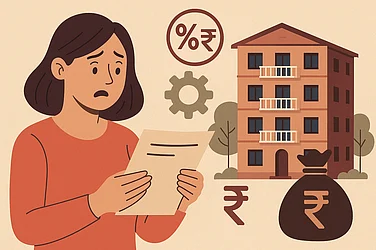Union Budget 2025 has proposed key reforms in the personal tax landscape, which will provide significant relief to taxpayers. Through a series of strategic reforms, Finance Minister Nirmala Sitharaman has sought to harness the potential of India’s rising middle class by enhancing their spending power, while simplifying the tax framework at the same time.
The finance minister revamped tax slabs and rates across the board, under the new tax regime, making it more appealing. Key proposals in this regard are increase in the basic exemption limit from Rs 3 lakh to Rs 4 lakh and nil tax for resident individuals up to taxable income (excluding certain special incomes) of Rs 12 lakh (up from Rs 7 lakh). The other two major ones were the fact that 30 per cent tax will now apply on income over Rs 24 lakh (up from Rs 15 lakh) and tax savings up to a maximum of Rs 1.1 lakh (excluding the impact of surcharge and cess).
According to the revamped slab rates under the new tax regime, for a salaried taxpayer, with income of Rs 24.75 lakh and above (before standard deduction), the break-even point for income tax deductions to choose between the old tax regime and new tax regime has increased from Rs 4,83,333 to Rs 8.50 lakh.
Some may exceed the break-even point of Rs 8.5 lakh. They may include individuals eligible for a substantial HRA exemption, coupled with other deductions under the old regime
Thus, in case aggregate deductions/exemption eligible under old tax regime are higher than Rs 8.50 lakh (including standard deduction), then the old tax regime may be more beneficial.
Normally, the aggregate of deductions/exemptions commonly claimed by salaried individuals do not exceed Rs 8.50 lakh. Thus, the new tax regime may be more beneficial.
However, there would still be some cases, where aggregate amount of eligible deduction exceeds such break-even point of Rs 8.50 lakh. This may include individuals paying high rent amounts, who are eligible for a substantial house rent allowance (HRA) exemption, coupled with other deductions available under the old tax regime.
These include Rs 1.5 lakh under Section 80C (life insurance, Public Provident Fund (PPF), tuition fees etc.), Rs 50,000 under Section 80CCD(1B) (employee’s contribution to the National Pension System or NPS), Rs 25,000 under Section 80D (health insurance premium), loss on account of housing loan interest, payable for a house property, which could not be occupied because of employment in another city, where he is staying in a rented accommodation of Rs 2 lakh under Section 24(b), standard deduction on salary of 50,000, and HRA exemption of Rs 1.25 lakh etc.
Overall, the tax proposals presented in the Budget will reduce taxes and provide greater spending power to the majority of taxpayers. This will boost household consumption, savings and investment.
By Poorva Prakash, Partner, Deloitte India













